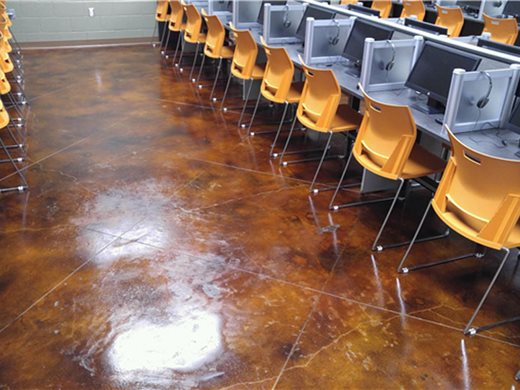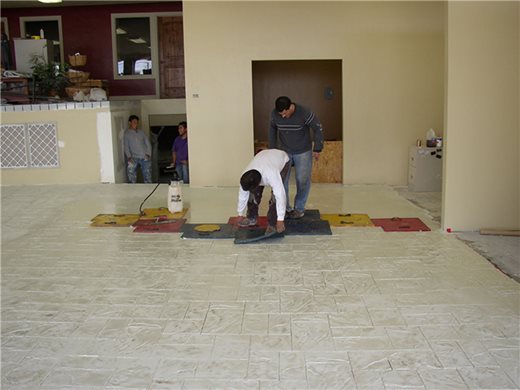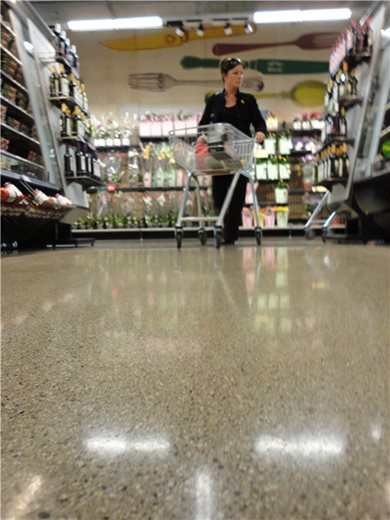We often spend time talking about how good decorative concrete looks. It is an aesthetically driven product. Yet, to focus on appearance alone sells decorative concrete short. Here are a few more reasons decorative concrete might be the right choice:

If decorative concrete looks the same as the “real deal,” why bother with concrete? The real questions is, why bother with the brick, stone, or pavers? Stamped and stenciled concrete can get you the same look at a fraction of the work. What would normally require days of backbreaking labor - placing pavers and tiles, grouting, tamping, and so on – only takes a couple hours of steady work with concrete. This means it takes less time and costs less to achieve your desired appearance.
Cost and labor savings extend beyond initial placement. Decorative concrete is lower maintenance and requires less upkeep compared to many of the materials it can replace. Traditional materials, especially wood, require heavy intervention to keep well maintained. A wood deck, for example, may require yearly staining or varnishing to stay in top shape. A stamped concrete patio, with a wood plank pattern, only requires occasional cleaning and resealing every couple years.

A well placed and maintained decorative concrete instillation can last for 50… even 100 years! How many common flooring materials can make that claim? Options such as linoleum, vinyl tile, and some laminates may last 20 years under the best circumstances, with significant deterioration after only a couple years.
Wood warps. Bricks and pavers settle. Stone shifts. All of these natural changes can result in safety and tripping hazards. When placed on a good and stable grade, however, concrete will remain steady. Flat decorative finishes, such as stenciled or stained concrete, offer a safe alternative. These finishes are attractive, durable, and flat which makes them ideal for handicap accessibility and general safety.
Everyone wants to be “green” and conservation is a big selling point for concrete. Concrete can easily be produced using locally sourced and recycled materials. Local rock and sand can be used, reducing the energy it takes to ship materials. Recycled aggregates can also be used to reduce raw material extraction. Some recycles aggregates, such as crushed stone, reclaimed concrete, broken tile, and glass can also add a unique aesthetic appeal!

Decorative concrete also saves energy after installation. By reducing maintenance demands, you spend fewer resources on upkeep. With radiant in-floor heating, decorative concrete floors reduce the amount of energy used by the building’s climate control. Concrete is a cornerstone of any sustainable building. Decorative concrete makes sustainability look good.
Dust, mold, and pet dander can all aggravate allergies and asthma. Porous flooring materials, such as carpet, trap and hold on to these irritants, making them difficult to remove. Some materials can even trap moisture and propagate mold and mildew. Concrete – especially polished concrete – prevents irritants from collecting.
Explore impressive concrete installations to find inspiration for your next project.
Find out how much color and fiber you'll need for any size project.